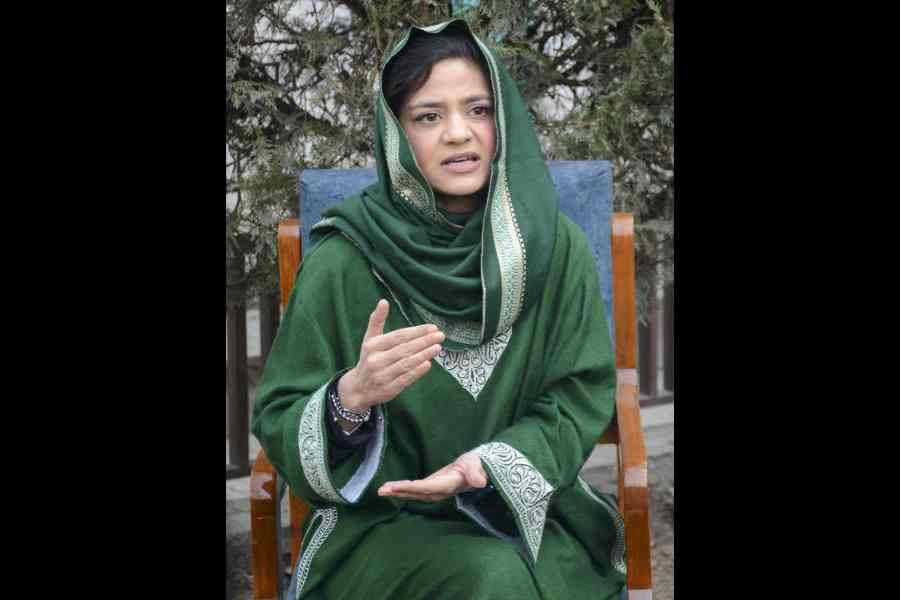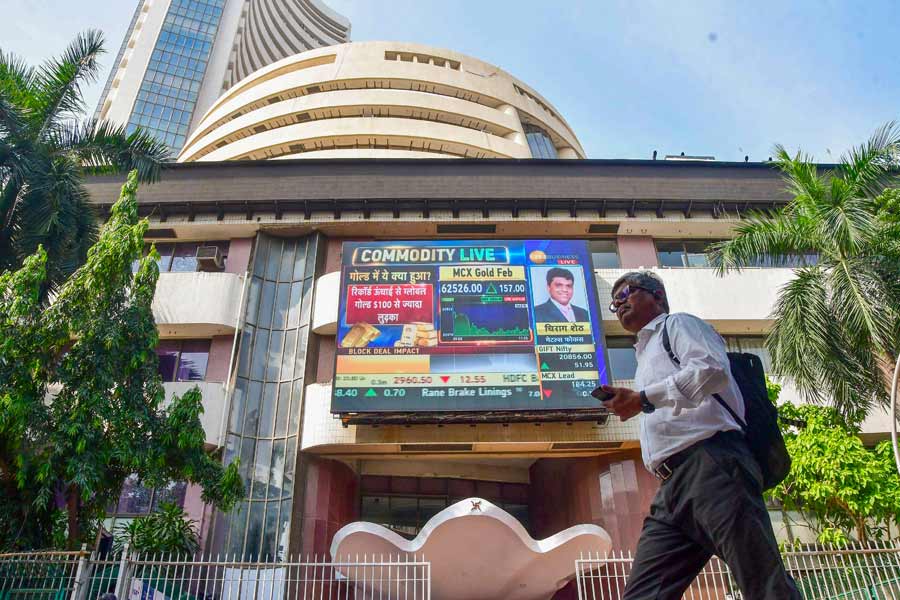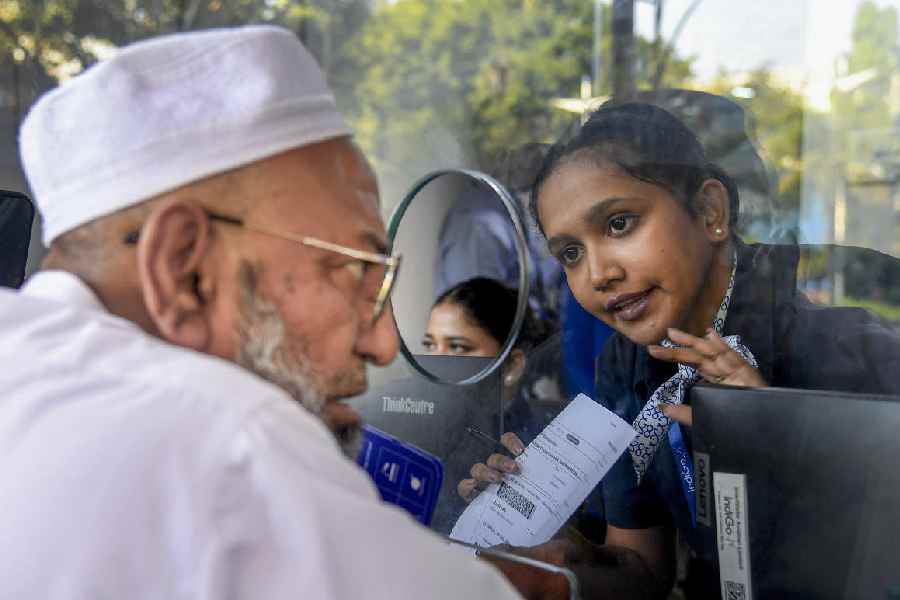 |
| A vendor offers colourful capscicums in front of Ranchi University headquarters last month. Picture by Prashant Mitra |
Call them what you will, capsicum or bell pepper or shimla mirch, but call them colourful.
If you like festive colours on your plate, look no further than red and yellow capsicums grown in Bero and Kanke blocks, courtesy Jharkhand State Horticulture Mission.
So far, green was the rule of the thumb as far as capsicums went.
But now, capsicums are turning snazzy — flamboyant reds and yellows. And the Ranchi homemaker, who’s always watched celebrity cookery shows and envied Sanjeev Kapoor and Kylie Kwong for dicing red and yellow capsicums and giving dishes a global look, can also try this out right in her kitchen.
The Ranchi homemaker also has a unique advantage that her favourite celebrity cooks don’t. As capsicums are grown near her city, prices are low — Rs 40 to Rs 50 per kg. Sanjeev Kapoor wouldn’t dream of this in Mumbai.
Otherwise, the capsicum is costly. In Jharkhand cities, they come for anything between Rs 80 and Rs 140 per kg.
Jharkhand State Horticulture Mission, which gave the initial push to around 100 farmers of Bero, 30km from Ranchi, and Pithoria village of Kanke block, 19km off the city limits, said the pilot mission was proving to be a tasty treat.
Mission director Prabhakar Singh said the yield was great. “We are planning to grow capsicums commercially. Farmers earn well from the cash crop. Even local consumers can purchase capsicum at a minimum price ranging from Rs 40 to Rs 50 per kg,” Singh added.
“We want interested farmers in the hinterland to become capsicum kings. There is good money in capsicum farming,” Singh smiled.
If coloured capsicums are cultivated in polyhouses, the cost of project is estimated to be Rs 35 lakh per acre, netting a cool annual profit of around Rs 3 lakh to Rs 5 lakh.
As the Mission’s project grows, local farmers will give capsicum imports tough contest. In Ranchi, Daily Market and Garden Fresh procure red and yellow capsicums from Delhi, Maharashtra and Bangalore.
But local farmers are already taking the initiative to bring their fresh produce to Ranchi for domestic and hotel buyers.
Temperate Ranchi and outskirts offer ideal climatic conditions for capsicum — not too hot but with a fair bit of rain. Also, polyhouse cultivation helps out nature.
Dhananjay Kumar, technical officer of research complex for eastern region at ICAR (Plandu), agreed that he saw great potential in growing coloured capsicums in polyhouses.
“Farmers can be trained in polyhouse cultivation,” he said. “This month, we’ll give them live demos.”
They would distribute seeds next month, he added.
It’s great news for sellers too. Ramesh Kumar, seen selling red and yellow capsicums near Kutchery market, said: “Customers these days prefer the coloured ones for salads.”
Kumar has started buying capsicums from farmers of Bero and Pithoria. But he still buys supplies from Delhi, Bangalore and Maharashtra.
“On an average, we earn Rs 500-Rs 1,000 per day. But if we buy more local supplies, we can increase our margins,” he added.
He may be right as the craze for coloured capsicums is growing. “I love brightening up my salads, Chinese and Thai dishes,” smiled Upper Bazar homemaker Mansi Singh.










